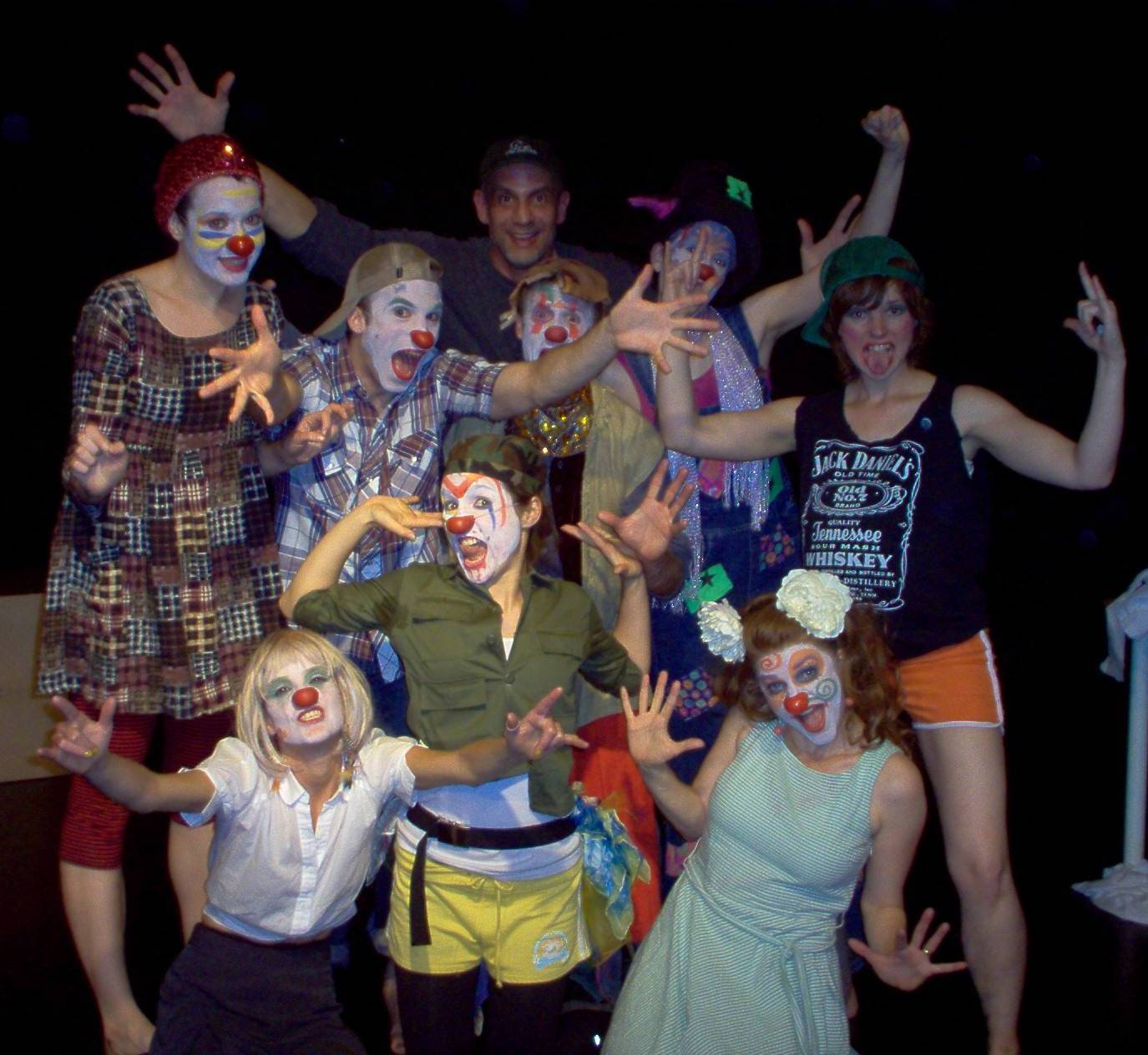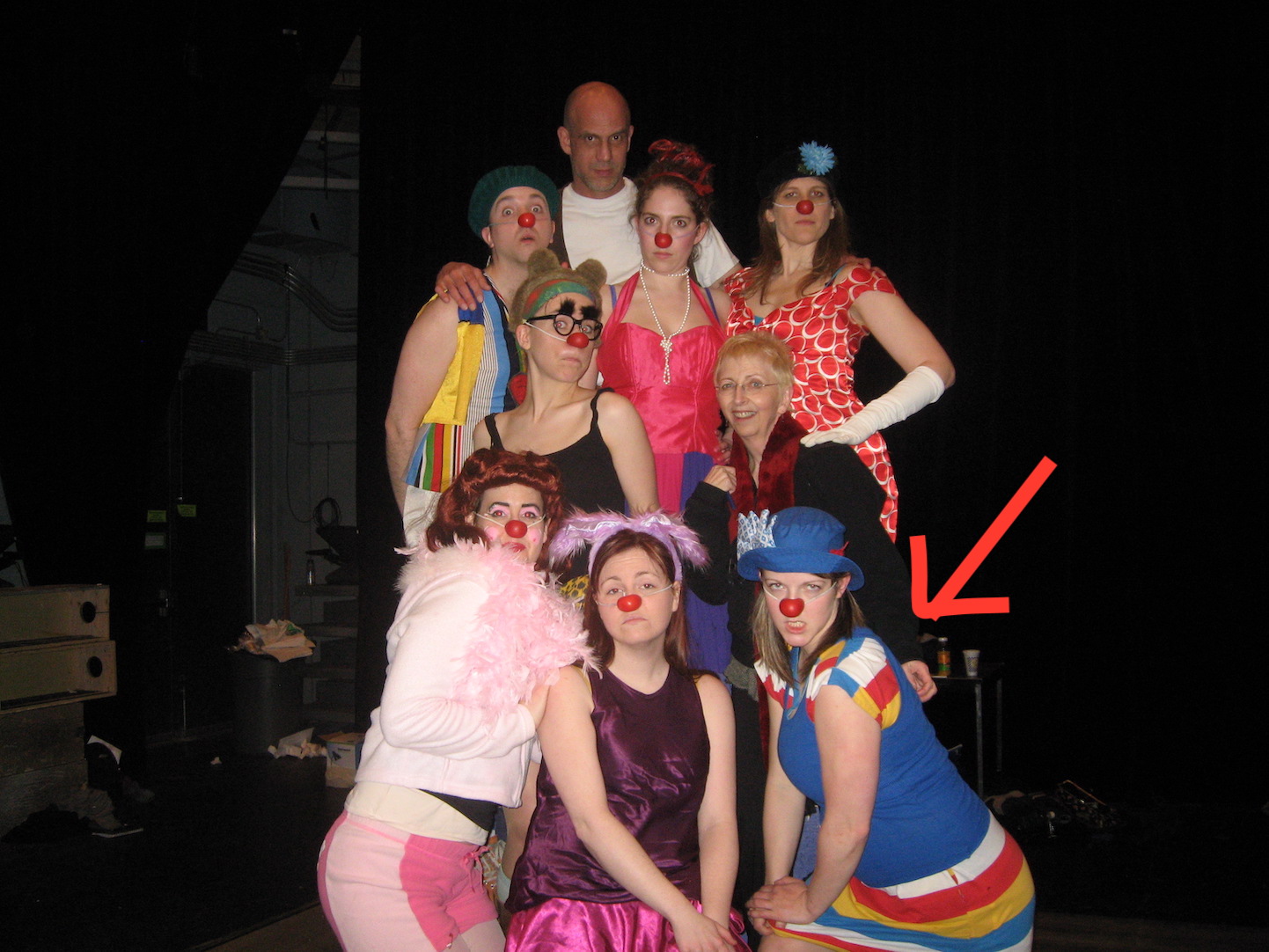Teaching
Statement of Teaching Philosophy
In 1987, I met my mentor Richard Pochinko, who changed my perspective on theatre. He introduced me to Canadian Clowning or The Pochinko technique, which is a unique blend of mask work, American Circus Clowning and European Clowning. After studying with Richard for three years, I discovered what I believe to be one of the best clown techniques and approaches to theatrical performance and creation. Before Richard passed in 1989, he continued exploring his technique and pushing the boundaries of clowning and performer created theatre. I have, along with my clown partner (John Turner), continued this exploration for the past thirty-six years through my teaching, creation, direction, performance and research.
Richard Pochinko had an intense desire, as do I, to help people break out of their creative prisons or “glass jars” as he called them. He believed everyone has a clown/performer force within them and through awakening and embracing this energy the glass jars could be broken, leading toward unfettered creativity and expression. This continues to manifest itself in my approach to teaching. In other words, I believe every student has the potential of becoming a great creator. It is therefore my job to find that potential within each student and to do so without judgment or preconceived notions of the student’s ability. With this in mind, I nurture and challenge the students in hopes of helping them on their quest to be great creators.
My general approach to teaching is that the performer must know, understand and be able to recognize the correlation between mind and body. Performers cannot be in the moment or honest if they are consistently in their heads or operating in negative fear. Therefore, the thrust of this work is about training performers to be aware of their bodies and the truth it tells. This is actualized through a series of exercises involving impulse & energy work, movement, stretching, strengthening, writing, kinetics (release work), vocal work, color exploration, games and improvisation. Once the principles within these exercises have been learned and understood by the student, the exercises are then adapted and advanced to suit the specific needs of the students or the style of theatre to be explored. All this becomes the basis for teaching specific styles such as acting, clown, mask, physical theatre/movement, physical comedy and performer created theatre.
I believe that my teaching is also tremendously influenced by my professional work and my research. Over the past thirty-six years, I have created, as performer, director and collaborator, over thirty original solo/ensemble shows. I have become extremely interested and passionate in using the above approach to create shows and now have a solid method for infusing these principles into any style of a performance. I will continue to explore this approach, as well as many other techniques used in theatre. All my experiences as a performer, director and a collaborator enhance my relationship to my students, as I share with them firsthand knowledge.
I have been teaching theatre for over 40 years and I am still fascinated by the challenges, discoveries and richness it brings to me and my students. Teaching fills me with a joy and a passion that I believe is inherently passed on to my students. There is nothing more rewarding than seeing a student grasp the knowledge you have passed on to them and to see their eyes light up in that wonderful moment when they realize “it works”. I have always loved teaching and now it has become a bigger part of my life purpose; to continue to share the knowledge that I was fortunate enough to receive from my teachers and pass it on to future generations.
-Michael Kennard

Important Teaching Principles
Credo
I teach my students to complete a personal Credo. They are asked to think, explore and write on what is important to them within their lives. I believe that any artist must know what they believe in so that they can go into any process of creation with a strong belief system. This then becomes the springboard for what they have to say to the world through their heart and art. It is the message from which creation begins.
The Magical Space (Energy/Breath)
There is a symbiotic energy that takes place between performer and audience when all the right techniques are practiced and the performer’s fears are embraced. This is taught gradually over time in all my classes and workshops through a series of different exercises and games. At the centre of this is breath. It is vital that each student learn how important breath is and its function within the performer/audience relationship. Through the breath we learn to understand our fears and embrace them. Breath is energy.
Inspiration
It is essential that each student learn to inspire themselves and their fellow colleagues. Again, this work all relates back to fear and the breath. My goal is to teach my students that judgment is not a valuable tool in the context of a class or performance environment. I teach them that the word inspire comes from “to be in spirit” and that if they work from this place their work will benefit enormously.
Cynical Benevolence
“Be as cynical about this work as you like but do the exercise anyway so you know what you’re rejecting!” When some students are first introduced to a new exercise the tendency is to resist the exercise, either because they don’t think it has anything to do with what they want to learn or they have a fear that they are unable to express within it. Cynical Benevolence gives permission for the student to participate in the exercise without resistance and then gives them the opportunity to reflect back on what their resistance was.
The Journey of Creation and Participating in Workshops
“Everyone is at their own pace and place and on their own journey”. It is extremely important for each student to respect themselves and others when it comes to doing personal exploratory and creative work. If the student finds themselves judging each other or me (the teacher) it is important that they are reminded that this is normal, but to remember that they must still support each other without interfering. “Do what you want but don’t hurt anybody, physically or emotionally!” (Quote from The Flaming Idiots, a juggling company from Austin, Texas.)
Teaching Performer Created Work/Collaboration
Most of my creative work has been collaborative, this I believe is the basic component for performer created theatre. From the performers, the designers, the writers, the technicians, the directors and the stage-managers all must be allowed their own impulses. This is what creates great teamwork, and in the end, great creations.
Clown
The clown work itself focuses on listening skills, exercises to awaken and encourage a sense of pleasure, audience awareness, honest responses to internal impulses and external events, color and painting work, making and wearing of masks and body work. In all aspects of this work, individual creativity is encouraged and explored as the students discover their clowns. The clown work is then taken into solo clown, “Joey” and “Auguste” (European Archetypes) and Ringmaster (trios), and ensemble work. Clown is a great asset to any style of performance as it leads to unfettered creativity and expression. I believe it to be a valuable tool for any performer to have in his/her repertoire.
Clacting (the fusion of Clown and Acting)
Clacting is my own technique/term that blends clowning and acting as a training and performance technique for actors. What it gives to performers is a sense of trust in themselves and their audience. It teaches the student about fear; how to embrace it and change it from scared nervousness to excited nervousness, how to express how they feel, how to trust their impulses and those of others, how to be honest and how to let their expectations go. Clacting enables the students to embrace the myriad of alternatives they have in any creative process. This and a constant sense of play, and awareness of playing space is essential for all actors and clowns. Being in the moment and having a sense of being alive on stage, both physically and emotionally, is vital to this technique.
Process of creating performer generated work
Below are the steps taken in my creation process.
1. Play games that help develop ensemble and play, continues throughout the process.
2. Make sure everyone has a Credo.
3. Discussions on where we (the group) are at in our lives and as creators/performers (heart of the show).
4. Begin making lists; potential concepts, themes, titles, spectacle and all ideas.
5. Discuss themes & potential Images
6. Develop message (involves Credo)
7. Begin to develop emotional and plot graph and basic beat template
8. Make and wear mask for exploration. Used for character and developing ideas.
9. Begin design elements – Image, lights, set, props and music.
10. Finalize all elements of the creation.
11. Begin rehearsals and presentations of the work!
Theatrical Disciplines I Teach
Clown - Clown through Mask, Solo Clown, Joey & Auguste & Ringmaster, Make-up, Gibberish
Creative Mask Making and Wearing – used for performance and creation
Physical Comedy – slapstick, bouffon, mime, movement
Performer Creation – writing, creating and producing your own show. (Solo or ensemble)
Circus Skills – Unicycling, Juggling, Stilt walking, tumbling, balancing and basic Magic
The Theatre Business - Producing, Grant Writing, Touring, Theatre Etiquette, Basic Technical
Improvisation, Sketch Comedy, Acting and Directing
"We perform and create to express not to impress"
- Unknown
